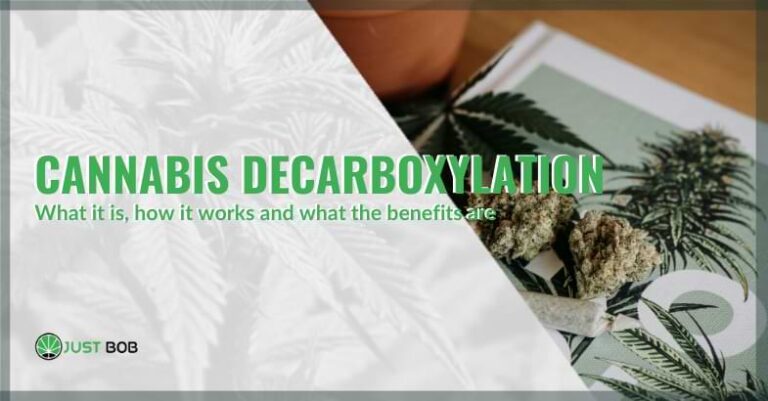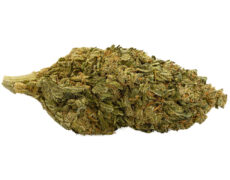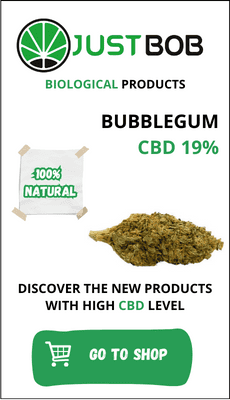Modified on: 20/08/2024
DECARBOXYLATION OF CANNABIS: HERE’S HOW IT WORKS
Have you ever cooked with cannabis or prepared herbal extracts, only to find that you did not get the desired effect? This could be due to the fact that you have not decarboxylated the cannabis properly.
Without this vital step, the active ingredients, such as THC and CBD, will remain in acid form and will not be able to offer the desired psychotropic or therapeutic effect.
-
 SMALL & BIG
SMALL & BIGBUBBLEGUM
Indoor | CBD – CBDA<22%
Starting from:EASTER SALE -10%
1,25CHF1,10CHF/gGrams3 5 10 20 50 100 -


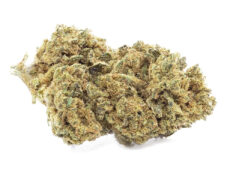
DO SI DOS
Starting from: 2,00CHF/gIndoor | CBD – CBDA < 19%
Grams3 5 10 20 50 100 -


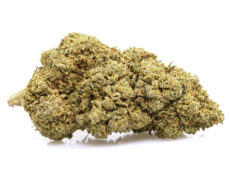
ROYAL GG#4
Starting from: 2,30CHF/gIndoor | CBD – CBDA < 40%
Grams3 5 10 20 50 100 -


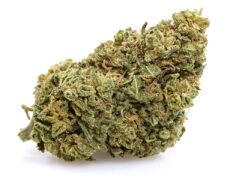
GORILLA GLUE
Starting from: 2,90CHF/gIndoor | CBD – CBDA < 20%
Grams3 5 10 20 50 100
But there is good news!
In this article, we will explore the different methods of decarboxylation and guide you through the process to ensure that you get the most out of your cannabis.
What is decarboxylation of cannabis?
Decarboxylation is a fundamental process for activating marijuana before it can be cooked. The basis of this process is the heating of the cannabis, for a specific period of time and at a fixed temperature. The same process occurs automatically when smoking or vaping the buds, thus subjecting them to heat.
During combustion, the cannabis is exposed to temperatures high enough to separate the carboxyl group from the cannabinoid group. Cannabinoids present in acid form, such as THCA and CBDA, are transformed into the psychotic and therapeutic cannabinoids, THC and CBD.
As we have already seen, if marijuana is smoked, decarboxylation occurs automatically, because heat is introduced. If, on the other hand, the use of cannabis is different and it is, for example, used to produce extracts or prepare recipes in the kitchen, without decarboxylation the end product will have no active ingredients.
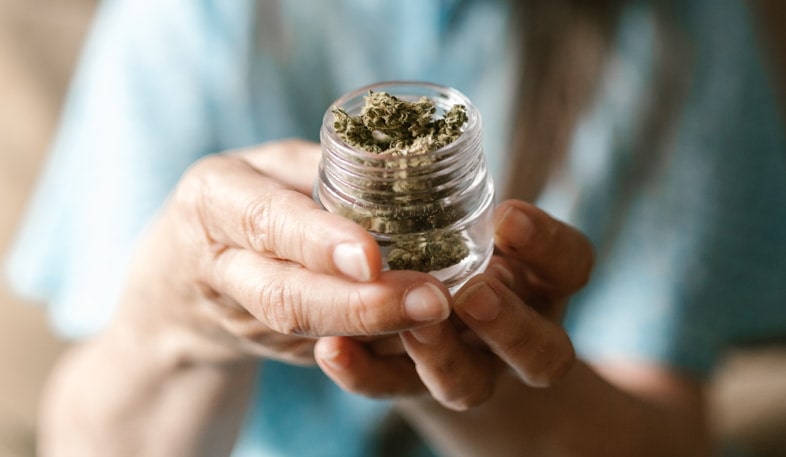

Indeed, cannabinoids in their acid form have beneficial properties, but decarboxylated products have much higher concentrations of them and, therefore, their effect will be greater. For best results, we recommend first finely chopping the buds, with a grinder for example. You can use both the inflorescences and the leaves.
Decarboxylation thus enables the transformation of cannabinoids from their acid form, CBDA and THCA, to their psychotropic form, in the case of THC, and their therapeutic form in the case of CBD (CBD oil for example).
In essence, decarboxylation makes it possible to obtain active ingredients that easily interface with the body’s endocannabinoid receptors and are therefore more effective. Chemically, the molecules in their acid form have an extra carboxyl group, and switch from tetrahydrocannabinol (THCA) and cannabidiolic acid (CBDA) to tetrahydrocannabinol (THC) and cannabidiol (CBD).
Read also: Aggressive dogs and CBD oil: benefits and advice for four-legged friends
When is decarboxylation necessary?
Many marijuana preparations can be made, from edible recipes to relaxing herbal teas. For any use of cannabis, except for smoking it, decarboxylation is necessary to release the active ingredients in large quantities.
One example is the so-called cannabutter, or cannabis butter. It can be prepared from the buds, or from a mix of leaves, stems and branches.
Preparation is quick and easy, and is based on the principle of blending the oils of the cannabis with those of the butter. Simply grind the cannabis finely, place it in a pot with butter and water in a ratio of 1:4, and finally bring the mixture to a boil. By adding heat to the cannabis, the decarboxylation process takes place.
The same principle applies to every other type of recipe, whether savoury or sweet, in which cannabis-flavoured olive oil and cannabutter are often used, but also to herbal teas, where there is a very important boiling phase.
In this sense, it is really important to look for good quality cannabis only, and the reason is simple.
There is no such thing as good cannabis for everyone, because everyone has their own needs and tastes. There is, as we said, good and bad quality weed. Knowing how to recognise the good quality is important, since low-quality weed will also have low concentrations of active ingredient and will be ineffective.
To recognise it, a few tips can be kept in mind, which can help to avoid using poor quality weed:
- First of all, the herb should be somewhat sticky and there should be no twigs in it, as this can give it an unpleasant taste
- The smell is also important: it must be intense, an indication of good quality
- Finally, the moisture must be checked: the grass must be completely dry and dry, otherwise there is a risk that it may become mouldy or deteriorate.
Decarboxylation: how does it work exactly?
There is no single decarboxylation process, but it can be done in several ways. Some of the most common and effective are decarboxylation by baking and vacuum cooking. Both are very simple to perform and do not require the use of complex equipment.
#1 Decarboxylation by oven
The first step is to preheat the oven to a temperature between 100 and 105 °C. Next, it is necessary to crush the cannabis (CBD cannabis in its legal version), either by hand or with scissors, and reduce it to small pieces.
Once this is done, the shredded product should be spread evenly on a baking tray covered with baking paper and baked in the hot oven for about 45 minutes. After this time, the cannabis will have changed in appearance and will have taken on a golden-brown colour. It will also be crumbly to the touch.
At this point the process is finished and the cannabis can be crushed with a grinder or blender until it becomes a powder with a high THC content that can be used in the kitchen for all kinds of preparations or recipes.
#2 Vacuum cooking
This method is a little more sophisticated than the previous one and requires certain items that not everyone may have at home.
The advantage is that the decarboxylation will be uniform, and there will be no risk of burning parts of the mixture during the process. The necessary tools are:
- A vacuum machine
- An immersion circulator
- A pot
- A grinder
Again, the first step is to shred the cannabis, either by hand or using scissors. The product must then be placed in a bag and vacuum-sealed with the appropriate machine. Now it is necessary to fill the pot with water, then place the immersion circulator inside and select a temperature of 95 °C.
When the temperature is reached, the bag must be inserted into the water and left inside for an hour.
It is important that the pouch is completely immersed in the water for an optimal decarboxylation process, and that no parts are exposed to the air outside. After this time, the process is complete and the cannabis can be recovered and finely ground with a grinder to obtain the desired powder.
But that’s not all.
As we have seen, in order to have an even and complete decarboxylation, choosing the right temperature is crucial.
Obviously, a certain temperature must be combined with an appropriate heat exposure time. Taking the oven method as an example, it is possible to change the temperature, but likewise the exposure time must be changed. If the oven is set at 90 degrees, 75 minutes will be needed for the process, while at a temperature of 120 degrees, only 30 minutes will be needed.
It seems, therefore, that higher temperatures are convenient and save time, but this is not always the case. By raising the thermometer too high, one risks burning some parts of the cannabis, which will then be unusable and will have lost its active ingredients.
So, to sum up, it is good not to be in a hurry, but spending a little more time will certainly yield a better result.
Read also: Full-spectrum CBD oil: what it is and what it means
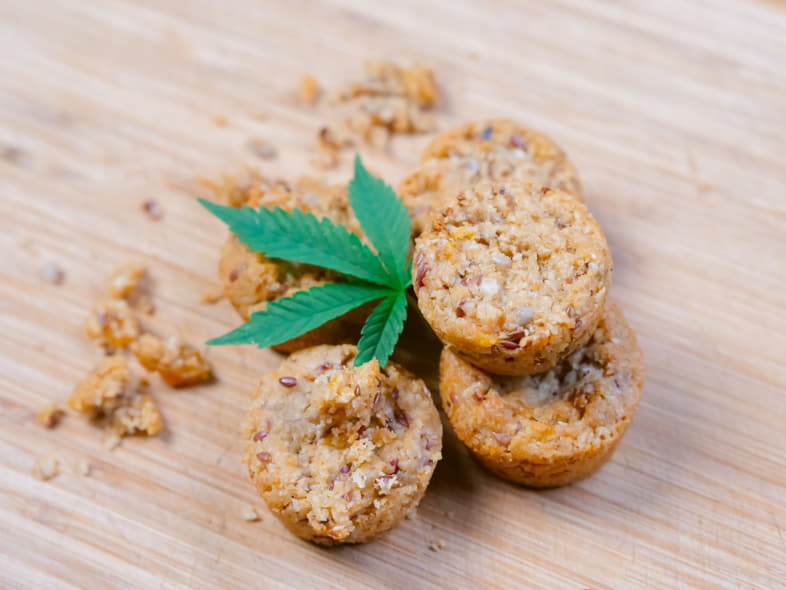

Conclusions
In conclusion, decarboxylation is a crucial process for activating the beneficial properties of cannabis. It involves heating the plant material to transform cannabinoids in their acid form, such as THCA and CBDA, into their psychoactive and therapeutic counterparts, THC and Cannabidiol, respectively. While smoking automatically decarboxylates cannabis due to the heat involved, other methods of consumption, such as cooking or extracting, require deliberate decarboxylation to ensure the final product contains active ingredients.
Decarboxylation allows for higher concentrations of cannabinoids, enhancing their effectiveness when interacting with the body’s endocannabinoid receptors. It is important to use high-quality cannabis for optimal results, characterized by stickiness, a pleasant smell, and appropriate dryness.
Decarboxylation can be achieved through various methods, including oven baking and vacuum cooking. Oven decarboxylation involves finely chopping the cannabis and baking it at a specific temperature for a designated time. Vacuum cooking offers a more precise and uniform decarboxylation process, using a vacuum machine, immersion circulator, and water bath.
Choosing the right temperature and exposure time is crucial for achieving an even and complete decarboxylation. It is essential to balance heat levels to avoid burning the cannabis and losing its active ingredients. While higher temperatures may save time, it is advisable to be patient and prioritize the quality of the final product.
Overall, understanding and implementing proper decarboxylation techniques are essential for maximizing the therapeutic and psychoactive effects of cannabis in various culinary (with use of CBD flowers) and medicinal applications.
💡TAKEAWAYS ON DECARBOXYLATION OF CANNABIS
- Decarboxylation is a key process for activating cannabis prior to cooking. It heats cannabis to a specific temperature for a specific period of time, transforming the acidic cannabinoids into psychoactive and therapeutic cannabinoids.
- Decarboxylation occurs automatically when smoking or vaping cannabis buds due to the heat introduced. However, if cannabis is used to produce extracts or prepare recipes in the kitchen, decarboxylation is necessary to obtain active ingredients.
- Decarboxylation transforms acidic cannabinoids (such as CBDA and THCA) into their corresponding active cannabinoids (CBD and THC). This process makes the active ingredients more effective in interacting with the body’s endocannabinoid receptors.
- Decarboxylation is necessary for any cannabis preparation other than simple combustion, such as the preparation of cannabis butter (cannabutter) or cannabis oil. Without decarboxylation, the final product will have no active ingredients.
- It is important to use good quality cannabis for effective results. Low quality cannabis will also have low concentrations of active ingredients, rendering the product ineffective. Choosing sticky, twig-free, strong-smelling, dry cannabis is a good sign of quality.
FAQ ON DECARBOXYLATION OF CANNABIS
What is the process of decarboxylation of cannabis?
Decarboxylation is a fundamental process for activating marijuana before it can be cooked. The basis of this process is the heating of the cannabis, for a specific period of time and at a fixed temperature. The same process occurs automatically when smoking or vaping the buds, thus subjecting them to heat. During combustion, the cannabis is exposed to temperatures high enough to separate the carboxyl group from the cannabinoid group. Cannabinoids present in acid form, such as THCA and CBDA, are transformed into the psychotic and therapeutic cannabinoids, THC and CBD. As we have already seen, if marijuana is smoked, decarboxylation occurs automatically, because heat is introduced.
If, on the other hand, the use of cannabis is different and it is, for example, used to produce extracts or prepare recipes in the kitchen, without decarboxylation the end product will have no active ingredients. Indeed, cannabinoids in their acid form have beneficial properties, but decarboxylated products have much higher concentrations of them and, therefore, their effect will be greater. For best results, we recommend first finely chopping the buds, with a grinder for example. You can use both the inflorescences and the leaves. Decarboxylation thus enables the transformation of cannabinoids from their acid form, CBDA and THCA, to their psychotropic form, in the case of THC, and their therapeutic form in the case of CBD.
When is decarboxylation necessary?
Decarboxylation is necessary to release the active ingredients in large quantities in all cannabis preparations, except for smoking. For example, decarboxylation is required to prepare cannabutter, which is cannabis butter. The same principle applies to other recipes, both savoury and sweet, where cannabis-flavoured olive oil and cannabutter are often used. The boiling phase is also important for herbal teas.
How does the decarboxylation process work in the oven?
The first step is to preheat the oven to a temperature between 100 and 105 °C. Next, you need to grind the cannabis, either by hand or with scissors, reducing it into small pieces. Next, spread the shredded product evenly on a baking tray covered with baking paper and bake in a hot oven for about 45 minutes. By the end of the process, the cannabis will have changed in appearance, will take on a golden colour and will be crumbly to the touch. At this point, the cannabis can be ground with a coffee grinder or blender until a high-THC powder is obtained that can be used in the kitchen for all desired preparations or recipes.


